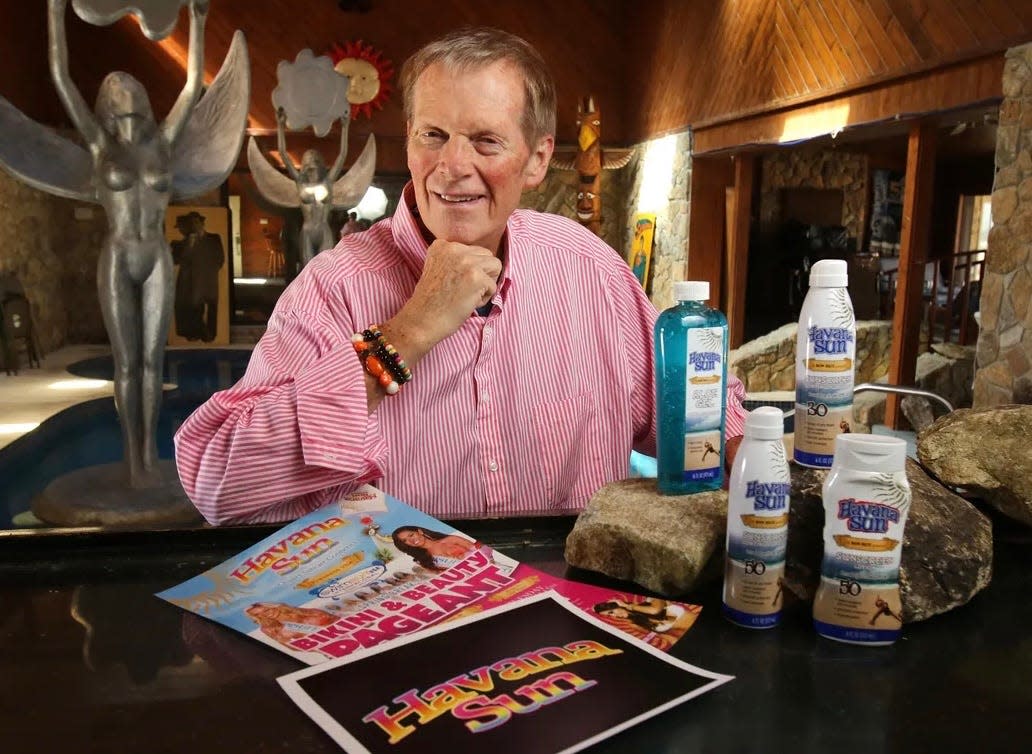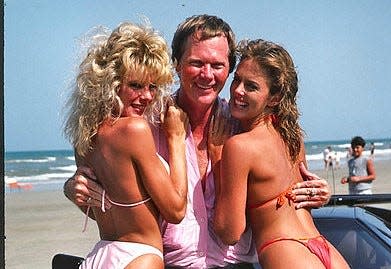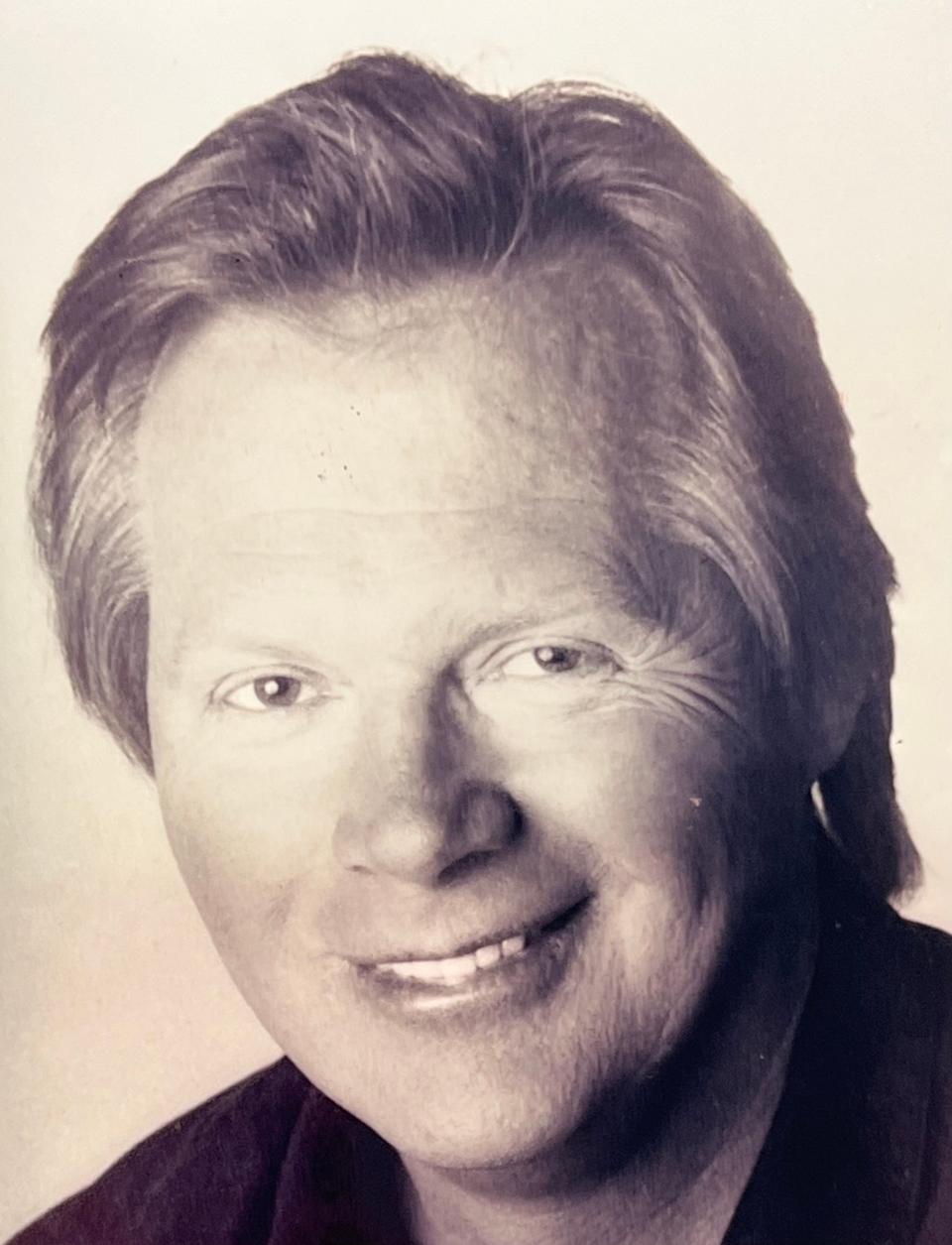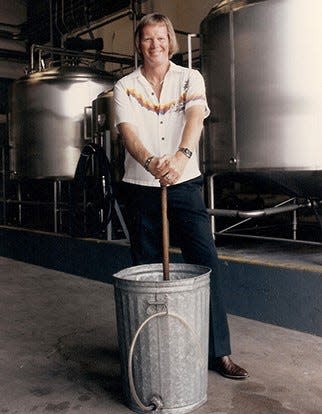Asheville native Ron Rice, creator of Hawaiian Tropic suntan lotion, has died

Ron Rice, an Asheville native who grew up dirt poor but went on to rub elbows with the rich and famous after creating Hawaiian Tropic suntan lotion, has died. He was 81.
A promotional wizard with a knack for gaining attention through beauty pageants and auto racing, Rice was born in Asheville in September 1940, the son of Clyde and Pauline Crosby Rice. Ron Rice died May 26 in his 12,000-square-foot home just north of Daytona Beach, Florida, according to news reports.
A 1958 graduate of Lee Edwards High School (now Asheville High), where he played football, Rice left Asheville, first to attend Western Carolina University, according to Citizen Times news stories. He ended up at the University of Tennessee in Knoxville, earning a degree in science.
Humble beginnings, but always motivated
In a 1983 interview with the late Citizen Times columnist Bob Terrell, Rice told the paper he grew up in Haw Creek and operated a roadside stand in the summers near the Dreamland Drive-In Theater in East Asheville, where a Lowe’s Home Improvement store stands now. He started working when he was just 5 years old.
More: Karen Cragnolin, Asheville pioneer of river revitalization and RiverLink, dead at 72
“I had my own cider mill,” Rice said, "and kept my own bees for honey. I cracked black walnuts and sold them. I sold peaches, strawberries, gooseberries, even live rabbits. My brother, Crosby, and my sister, Barbara, worked for me, keeping the stand supplied.”
Rice's father worked as an engineer at the former American Enka rayon plant in Buncombe County. While the family wasn't wealthy, they could afford a trip to Florida when Ron Rice was a kid, and that instilled a lifelong love of the beach in the youngster.
In 1966, Clyde Rice loaned his son $500 to get the suntan lotion business going. Terrell noted that Rice whipped up his first batch of suntan oil in a galvanized garbage can, and while sales were slow initially, by 1970, he knew the company was going to hit the bigtime.
In 1973, it really blew up.
“I was always worried and even paranoid till then,” Rice told Terrell. “But that year I saw there was nothing to worry about, so I quit worrying and began enjoying things.”
The company went on to establish factories around the world. By 1983, Rice told Terrell, he didn’t need any more money.
“I have enough to buy anything I want,” Rice said. “Money isn’t important to me now. What is important is seeing that my people make money – those who were pushing when I was pulling. A lot of them were teachers, coaches and lifeguards with whom I worked, who came with me because they believed what I was doing would be successful.”
More: George Cecil, Vanderbilt's grandson and Biltmore Farms owner, dies at 95
Terrell also noted that Rice, as a good friend of actor Burt Reynolds, had no problem getting the brand name in almost all of Reynolds’ movies.
Rice also believed "in riding a good horse all the way" and not messing with the formula for success.
"That product I mixed in that galvanized can back in 1966 was evidently the right one,” Rice said. “We have built my company on it. Over the years we haven’t changed the formula or the label.”
Terrell wrapped up by saying Rice “made his millions without letting a single dollar go to his head. He is still a nice, down-to-earth fellow who appreciates his lot in life and wants to do something for his fellow man.”
Trip to Hawaii was key
Another Citizen Times story, from 1993, noted Rice was back in town then to attend a fundraiser for the Asheville City and Buncombe County Schools Foundation. That article said Rice, during his college days, had planned to go into geology and search for oil for one of the big multinational corporations.
“I was offered a job by every oil company in the business,” Rice said. “But they wanted me to go around to gas stations and show them how to stack oil cans. I wasn’t interested.”
So Rice went to Florida and started teaching high school chemistry and working as a lifeguard in the summers. He saw a lot of people using Coppertone suntan lotion, and that sparked an idea.
More: William A.V. Cecil, Vanderbilt's grandson and Biltmore owner, dead at 89
Rice took a trip to Hawaii in the mid-1960s to see what products the natives used, Terrell wrote. It was a trip that changed the course of his life, the Citizen Times reported in 1993.
“I saw how beautiful the people were,” Rice said. “The women would take baby coconut gel and mix it with other oils and rub it in their hair. I noted they were all using things found in plants, especially the gel from baby coconuts.”
The Daytona Beach News-Journal reported that Rice, while working on a local beach as a lifeguard, spotted countless bottles of Coppertone suntan lotion and thought he could do better.
Former marketing partner Allan Cohen told the News-Journal that Rice's life story was "almost right out of the Mark Twain stories.
"Here’s this kid in the Carolina mountains, running around barefoot, selling Christmas wreaths, working hard like his father taught him. In many ways, I think he was the original Jed Clampett.”

What was that formula?
But, as the paper noted in reference to the "Beverly Hillbillies" TV show, instead of striking crude oil, Rice concocted Hawaiian Tropic, "a mixture of mineral oil, coconut oil, some extracts, some this, some that," the paper said.
Rice once described it as "a little ABC with XYZ," the paper noted.
The New York Times, which marked Rice's death with a news obituary, put it this way:
"On the side, he blended myriad combinations of coconut oil, exotic fruits, aloe, avocado, kukui, mineral oil and cocoa butter until they combined into a lotion that a few 11-year-olds he enlisted from the neighborhood poured from that foundational garbage can into bottles labeled Hawaiian Tropic and sold for the first time on the beach on July 20, 1969."
More: Answer Man: Carl Mumpower had bad case of COVID-19? Transmission lines MIA?
The article continued, highlighting Rice's penchant for hanging out with celebrities.
"By 2006, after years of unabashed promotion through beauty pageants judged by celebrities (Donald J. Trump met his second wife, Marla Maples, when she was a Hawaiian Tropic pageant contestant), automobile races (the company name was on a Porsche driven by Paul Newman at Le Mans in 1979), and cunning and not-so-subtle placements in films and on television shows — along with various other stunts — sales of Hawaiian Tropic had topped $110 million, making it the second-largest sun-care product company in the world," the New York Times wrote. "A year later, Mr. Rice sold it to Playtex Products for $83 million."

The Times and the News-Journal cited a TV interview Rice once gave in which he said he made $4,300 a year teaching and coaching. He came to enjoy the glitzy highlife a little more.
"It’s fun, and there’s a lot of extra toys involved, and a lot of fun times, and I drink a little better-quality wine, of course, but I’m still a country boy," Rice told the interviewer.
The Hawaiian Tropic brand became synonymous with the Hawaiian Tropic girls, deeply tanned, bikini-clad models that turned heads wherever they went, often on Rice's arm. Rice sponsored a NASCAR racing team in addition to the Newman race car.
"As for his personal wheels, Rice owned the Lamborghini driven by Burt Reynolds (who became a close friend) in the 1981 film, 'Cannonball Run,'" the News-Journal reported.
The News-Journal also noted Rice was married twice, "including a brief second marriage in the early 1990s to Darcy LaPier, an aspiring actress who’d been a Miss Hawaiian Tropic contestant several years earlier. They had one daughter, Sterling. Rice, years later, said he and Darcy rekindled a friendship and remained dear friends thereafter."

Despite a celebrity-laden, wealthy lifestyle, Rice remained humble about his beginnings, news reports said.
The New York Times article noted Rice saved that galvanized garbage can that held the first batch of Hawaiian Tropic. In fact, he had it silver plated and kept it on display in his living room.
This article originally appeared on Asheville Citizen Times: Ron Rice, Asheville native and Hawaiian Tropic sunscreen creator, dies

